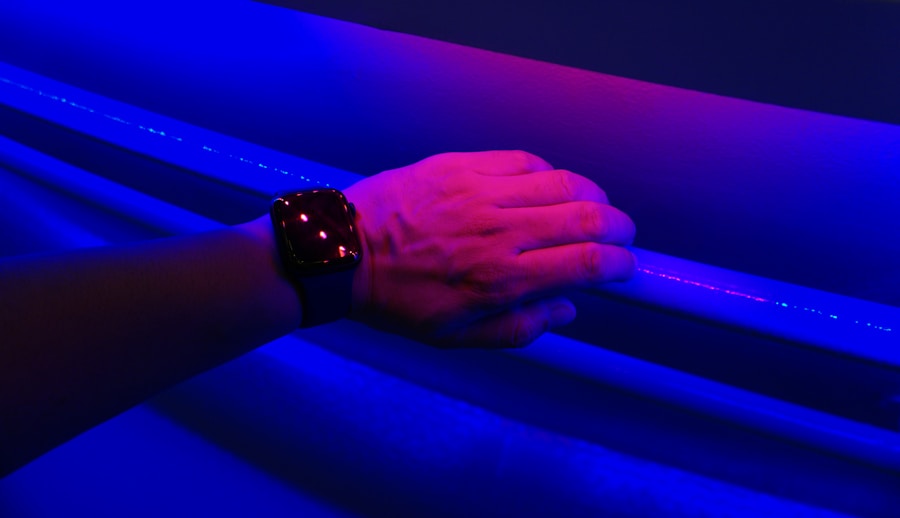Virtual Reality and Beyond: The Evolution of Digital Art Museums
Virtual reality (VR) art museums have been on the rise in recent years, offering a new and innovative way for people to experience and interact with art. These virtual spaces allow visitors to explore art collections from around the world without leaving their homes, providing a level of accessibility that traditional museums cannot match. The immersive nature of VR technology allows for a more engaging and interactive experience, as visitors can walk through virtual galleries, view artwork up close, and even interact with certain pieces in ways that would not be possible in a physical museum setting. This has opened up new possibilities for artists to showcase their work and for art enthusiasts to engage with art in a whole new way.
The rise of VR art museums has also been driven by advancements in technology, making it easier and more affordable for artists and curators to create virtual exhibitions. With the increasing popularity of VR headsets and the development of user-friendly VR platforms, more and more artists and museums are embracing this new medium as a way to reach wider audiences and provide a unique art experience. As a result, VR art museums have become a growing trend in the art world, offering a glimpse into the future of how art can be experienced and appreciated.
The Impact of Digital Art on Traditional Museum Experiences
The rise of digital art has had a significant impact on traditional museum experiences, challenging the way we perceive and interact with art. Digital art, which encompasses a wide range of mediums including computer-generated imagery, interactive installations, and virtual reality experiences, has pushed the boundaries of what is considered “art” and has forced traditional museums to adapt to these new forms of artistic expression. As a result, many museums have begun to incorporate digital art into their collections and exhibitions, recognizing its importance in shaping the future of art.
The impact of digital art on traditional museum experiences can be seen in the way it has transformed the way we engage with art. Digital art often blurs the lines between the physical and virtual worlds, creating immersive and interactive experiences that challenge our perceptions of space and time. This has led to a shift in how museums curate and present their collections, as they seek to incorporate digital art in ways that enhance the overall visitor experience. As a result, traditional museum spaces are evolving to accommodate these new forms of artistic expression, creating a more dynamic and engaging environment for visitors to explore and appreciate art.
Exploring the Boundaries of Digital Art in Virtual Reality
Virtual reality has become an exciting new frontier for exploring the boundaries of digital art, offering artists and curators the opportunity to create immersive and interactive experiences that push the limits of traditional artistic expression. In virtual reality, artists can create entire worlds and environments that are not bound by the constraints of physical space, allowing for new forms of storytelling and artistic exploration. This has opened up new possibilities for artists to experiment with different mediums and techniques, as well as for audiences to engage with art in ways that were previously unimaginable.
One of the most exciting aspects of exploring the boundaries of digital art in virtual reality is the potential for collaboration and interaction. Virtual reality allows for multiple users to experience and interact with art simultaneously, creating a shared experience that can be both social and collaborative. This has led to the development of virtual reality art installations and exhibitions that encourage visitors to engage with art in new and innovative ways, fostering a sense of community and connection that is unique to the virtual realm. As a result, virtual reality has become an important platform for pushing the boundaries of digital art and creating new opportunities for artistic expression.
The Role of Technology in Preserving and Sharing Artistic Heritage
Technology has played a crucial role in preserving and sharing artistic heritage, allowing for the digitization and preservation of artworks that may otherwise be at risk of deterioration or loss. Through advancements in digital imaging and conservation techniques, museums and cultural institutions have been able to create high-quality digital replicas of artworks, making them accessible to a global audience. This has not only helped to preserve artistic heritage for future generations, but has also allowed for greater accessibility and engagement with art from around the world.
In addition to preservation, technology has also played a key role in sharing artistic heritage with a wider audience. Through online platforms and virtual exhibitions, museums have been able to reach audiences beyond their physical locations, allowing people from all over the world to experience and appreciate art in new ways. This has helped to democratize access to art and culture, breaking down barriers that may have previously limited who could engage with artistic heritage. As a result, technology has become an essential tool for preserving and sharing artistic heritage, ensuring that it remains accessible and relevant in an increasingly digital world.
The Future of Digital Art Museums: Innovations and Possibilities
The future of digital art museums is filled with exciting innovations and possibilities, as technology continues to evolve and shape the way we experience and appreciate art. One of the most promising developments is the integration of artificial intelligence (AI) into digital art museums, allowing for personalized and interactive experiences that cater to individual preferences and interests. AI can analyze visitor behavior and preferences, providing recommendations for artworks or exhibitions that are tailored to each visitor’s unique tastes. This has the potential to create a more engaging and immersive experience for visitors, as well as to provide valuable insights for museums on how to better curate their collections.
Another exciting possibility for the future of digital art museums is the use of augmented reality (AR) technology to enhance the visitor experience. AR allows for digital information to be overlaid onto the physical world, creating interactive and immersive experiences that blend the real and virtual worlds. This has the potential to revolutionize how we engage with art in museum settings, allowing visitors to interact with artworks in new and innovative ways. For example, AR could be used to provide additional information about artworks or artists, or to create interactive experiences that encourage deeper engagement with the art on display. As a result, the future of digital art museums is filled with innovative possibilities that have the potential to transform how we experience and appreciate art.
Virtual Reality as a Tool for Art Education and Accessibility
Virtual reality has emerged as a powerful tool for art education and accessibility, providing new opportunities for people to engage with art regardless of their physical location or abilities. Through virtual reality experiences, individuals can explore art collections from around the world, gaining access to cultural heritage that may have been previously out of reach. This has helped to democratize access to art education, providing a more inclusive and diverse learning experience for people from all walks of life.
In addition to accessibility, virtual reality has also proven to be an effective tool for enhancing art education. By creating immersive and interactive experiences, virtual reality allows for a more engaging and dynamic approach to learning about art history, techniques, and artistic movements. This has the potential to revolutionize how art is taught in educational settings, providing students with a more hands-on and experiential learning experience that can deepen their understanding and appreciation of art. As a result, virtual reality has become an important tool for expanding access to art education and creating new opportunities for people to engage with art in meaningful ways.
The Intersection of Virtual Reality and Traditional Art Practices
The intersection of virtual reality (VR) and traditional art practices has led to new possibilities for artistic expression and creation, blurring the lines between physical and virtual worlds. Artists are increasingly using VR technology as a medium for creating immersive artworks that challenge traditional notions of space, time, and perception. This has led to the development of new artistic practices that incorporate VR as a tool for storytelling, visual expression, and interactive experiences.
One of the most exciting aspects of this intersection is the potential for collaboration between traditional artists and VR creators. By combining traditional artistic techniques with VR technology, artists are able to push the boundaries of their practice, creating new forms of expression that are both innovative and immersive. This has led to the development of collaborative projects that bring together artists from different disciplines to explore the possibilities of VR as a medium for artistic creation. As a result, the intersection of VR and traditional art practices has opened up new avenues for artistic exploration and collaboration, creating exciting opportunities for artists to push the boundaries of their practice.





